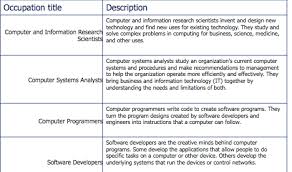The Essential Role of a Software Engineer in Today’s Tech Industry
The Role of a Software Engineer
A software engineer is a professional who applies engineering principles to the design, development, maintenance, testing, and evaluation of software and systems that make computers or anything containing software work. They play a crucial role in the tech industry by creating innovative solutions to complex problems.
Responsibilities of a Software Engineer:
- Designing and developing software applications
- Testing and debugging software to ensure quality and performance
- Collaborating with other team members, such as designers and product managers
- Implementing best practices in software development processes
- Keeping up-to-date with the latest technologies and trends in the industry
- Maintaining and updating existing software systems
Skills Required:
To excel as a software engineer, one needs a combination of technical skills, problem-solving abilities, creativity, and strong communication skills. Some essential skills for a software engineer include:
- Proficiency in programming languages such as Java, C++, Python, or JavaScript
- Knowledge of data structures and algorithms
- Understanding of software development methodologies like Agile or Scrum
- Ability to work well in a team environment
- Critical thinking and problem-solving skills
- Attention to detail and dedication to producing high-quality code
Career Outlook:
The demand for skilled software engineers continues to grow as technology becomes increasingly integrated into our daily lives. Software engineers can find opportunities in various industries, including tech companies, healthcare, finance, gaming, and more. With the right skills and experience, software engineers can advance their careers into roles such as senior developer, tech lead, or even CTO.
In conclusion, being a software engineer is not just about writing code; it’s about solving problems creatively and building solutions that have a real impact on people’s lives. It’s a challenging yet rewarding career path that offers endless opportunities for growth and innovation.
9 Essential Tips for Success as a Software Engineer 1
- Stay curious and keep learning new technologies
- Practice coding regularly to improve your skills
- Collaborate with team members and communicate effectively
- Write clean and maintainable code for easier debugging
- Use version control systems like Git to track changes in code
- Test your code thoroughly to ensure its reliability
- Document your code and processes for better understanding by others
- Attend tech events and conferences to stay updated with industry trends
- Seek feedback from peers to continuously improve yourself
Stay curious and keep learning new technologies
To excel as a software engineer, it is crucial to stay curious and continuously seek to learn new technologies. The tech industry is constantly evolving, and by staying curious, you can adapt to the latest trends and innovations. Embracing a mindset of lifelong learning not only enhances your skills but also keeps you ahead in the rapidly changing landscape of technology. By exploring new technologies, you can broaden your expertise, improve problem-solving abilities, and remain competitive in the dynamic field of software engineering.
Practice coding regularly to improve your skills
To enhance your proficiency as a software engineer, it is essential to engage in regular coding practice. By consistently working on coding challenges and projects, you can sharpen your problem-solving abilities, deepen your understanding of programming concepts, and become more adept at writing efficient and clean code. Practicing coding regularly not only helps you stay current with industry trends but also boosts your confidence in tackling complex tasks and projects effectively.
Collaborate with team members and communicate effectively
Collaborating with team members and communicating effectively are essential skills for a software engineer. By working closely with designers, product managers, and fellow developers, software engineers can leverage diverse perspectives and expertise to create innovative solutions. Clear communication ensures that everyone is on the same page regarding project goals, timelines, and potential challenges. Effective collaboration fosters a harmonious work environment and promotes the successful delivery of high-quality software products.
Write clean and maintainable code for easier debugging
When working as a software engineer, it is essential to follow the tip of writing clean and maintainable code. By adhering to this practice, developers can make the debugging process much more manageable. Clean code is easier to read, understand, and modify, which ultimately leads to faster identification and resolution of bugs. Additionally, maintainable code ensures that future updates and enhancements can be implemented smoothly without causing unintended issues. Embracing this tip not only benefits the individual developer but also contributes to the overall efficiency and quality of the software development process.
Use version control systems like Git to track changes in code
Using version control systems like Git is essential for software engineers to track changes in code efficiently. By utilizing Git, developers can easily manage different versions of their codebase, collaborate with team members seamlessly, and revert to previous versions if needed. This practice not only ensures better organization and documentation of code changes but also promotes a more structured and collaborative approach to software development. Overall, incorporating version control systems like Git into the workflow of a software engineer can greatly enhance productivity and streamline the development process.
Test your code thoroughly to ensure its reliability
To ensure the reliability of your software, it is crucial to test your code thoroughly. Testing helps identify and fix potential bugs and errors, ensuring that the software functions as intended. By conducting comprehensive testing, software engineers can increase the quality of their code and deliver a more reliable product to users. Testing also helps in maintaining the integrity of the software over time, as any changes or updates can be validated through testing procedures. Ultimately, thorough testing is a fundamental practice that contributes to the overall success of a software engineering project.
Document your code and processes for better understanding by others
Documenting your code and processes is a crucial practice for software engineers to ensure better understanding by others. By providing clear and detailed documentation, you not only make it easier for your team members to grasp the functionality of the code but also enable future developers to maintain and build upon it effectively. Well-documented code enhances collaboration, reduces errors, and streamlines the development process, ultimately leading to more efficient and successful software projects.
Attend tech events and conferences to stay updated with industry trends
Attending tech events and conferences is a valuable tip for software engineers to stay informed about the latest industry trends and advancements. These gatherings provide opportunities to network with peers, learn from experts through workshops and presentations, and gain insights into emerging technologies. By staying updated with industry trends, software engineers can enhance their skills, stay competitive in the job market, and contribute effectively to innovative projects within their organizations.
Seek feedback from peers to continuously improve yourself
Seeking feedback from peers is a valuable practice for software engineers looking to enhance their skills and grow professionally. By soliciting input from colleagues, software engineers can gain fresh perspectives, identify areas for improvement, and learn new techniques or best practices. Constructive feedback not only helps individuals refine their technical abilities but also fosters a collaborative and supportive work environment where team members can learn from each other’s experiences and expertise. Embracing feedback as a tool for self-improvement can lead to continuous growth and development in the dynamic field of software engineering.












